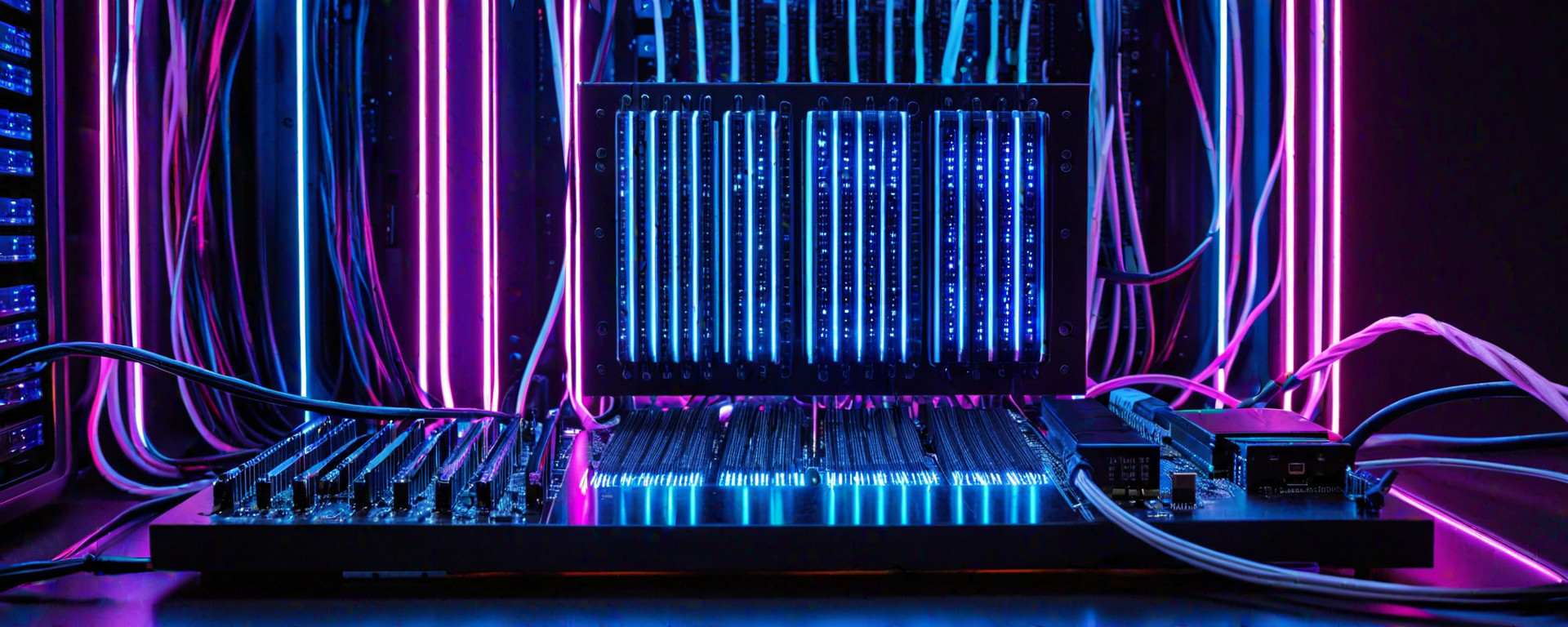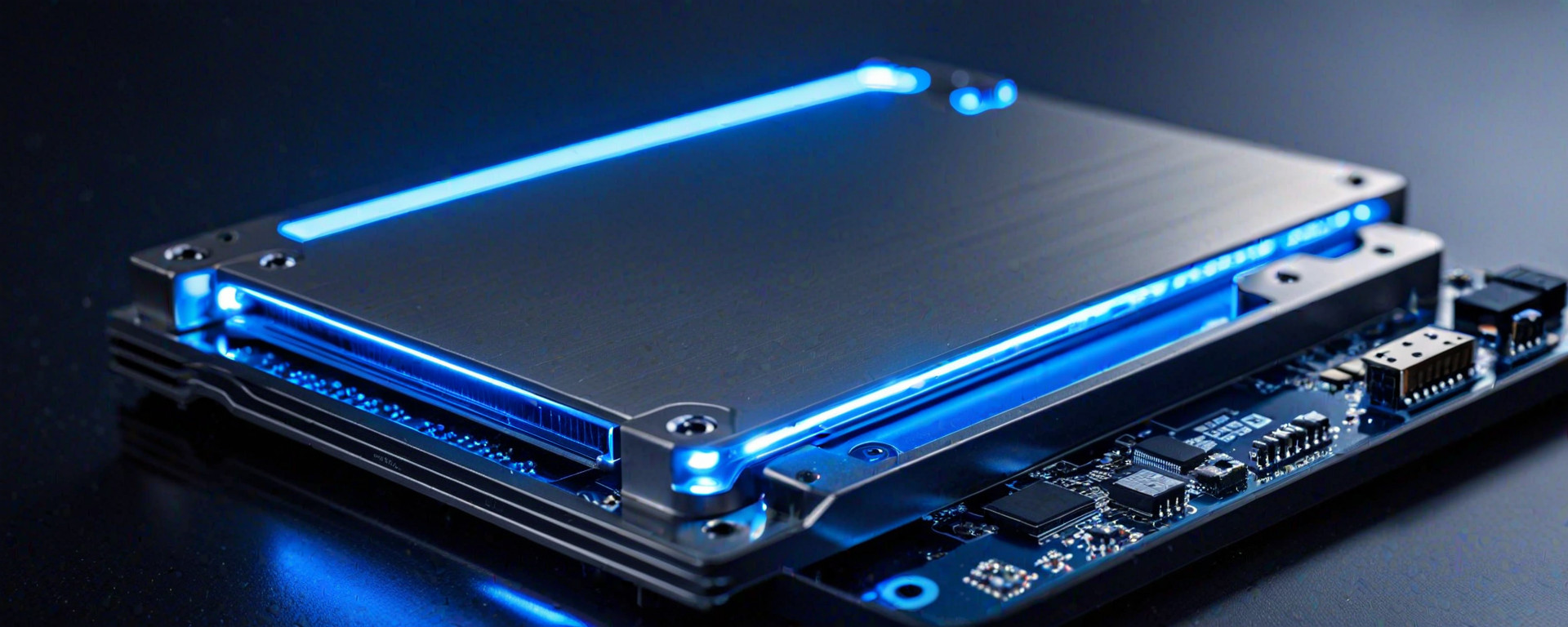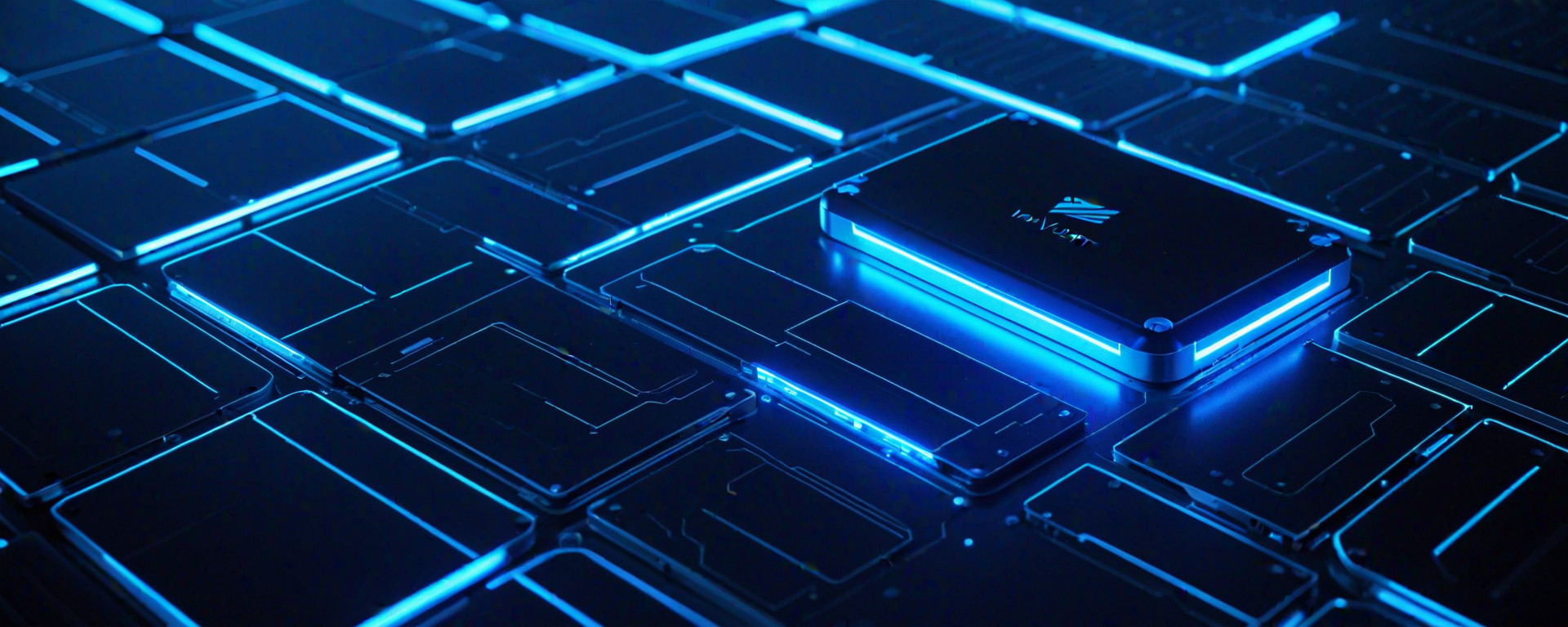Introduction
Non-Volatile Memory Express (NVMe) has revolutionized the way data storage operates in modern computing environments. NVMe technology enables solid-state drives (SSDs) to communicate with host systems over high-speed interfaces like PCIe, offering unprecedented speed and efficiency compared to traditional SATA or SAS SSDs. This article delves into the intricacies of NVMe technology, examining its benefits, applications, and real-world performance implications.
What is NVMe?
NVMe, short for Non-Volatile Memory Express, is a protocol designed specifically to take advantage of the low latency and parallelism inherent in SSDs. Unlike traditional SATA or SAS interfaces that were initially developed with mechanical hard drives in mind, NVMe optimizes data transfer by utilizing the PCIe interface's high bandwidth and low-latency capabilities.
How NVMe Differs from Traditional Interfaces
SATA (Serial ATA) and SAS (Serial Attached SCSI) are older storage interfaces designed for rotating disk drives. These interfaces have inherent limitations in terms of data transfer speed and efficiency when applied to SSDs. NVMe, on the other hand, is built from the ground up to exploit the characteristics of flash memory:
- Latency: NVMe can achieve sub-microsecond latency, making it significantly faster than SATA's several microseconds.
- I/O Operations Per Second (IOPS): NVMe SSDs typically offer tens to hundreds of thousands of IOPS, compared to a few thousand for high-end SATA drives.
- Data Transfer Rates: With PCIe lanes providing multi-gigabit data rates, NVMe can reach throughput speeds over 3GB/s per lane, much higher than the theoretical 600MB/s limit of SATA III.
Key Benefits and Applications of NVMe Technology
The advantages of NVMe technology extend far beyond just faster data transfer rates. Here are some key benefits:
- Faster Boot Times: With reduced latency, operating systems boot up more quickly.
- Better Performance in Data Centers: High IOPS and throughput make NVMe ideal for handling large volumes of concurrent requests in enterprise environments.
- Enhanced Gaming Experiences: Gamers benefit from faster loading times and smoother gameplay, thanks to NVMe's high-speed data access capabilities.
Comparison with Traditional SSD Interfaces
To better understand the performance gains offered by NVMe over traditional interfaces like SATA, let’s look at a few key metrics:
| Interface | Max Transfer Rate (GB/s) | Average IOPS Read | Average IOPS Write | Latency (ms) |
|---|---|---|---|---|
| SATA III | 600MB/s (~0.58GB/s) | 12,000-30,000 | 4,000-7,000 | 10-30 |
| SAS 12Gbps | 1.2GB/s (~1.11GB/s) | 65,000+ | 48,000+ | 0.7-3.0 |
| NVMe PCIe Gen 3 x4 | 2.4GB/s (~2.26GB/s) | 150,000+ | 80,000+ | 0.1-0.5 |
| NVMe PCIe Gen 3 x8 | 4.8GB/s (~4.52GB/s) | 260,000+ | 160,000+ | 0.1-0.5 |
| NVMe PCIe Gen 3 x16 | 9.6GB/s (~8.74GB/s) | 420,000+ | 320,000+ | 0.1-0.5 |
NVMe Form Factors and Physical Specifications
NVMe SSDs come in various form factors to suit different computing needs:
- M.2: Compact, commonly used for laptops and small-form-factor desktop systems.
- Add-in Cards (AIC): Full-size cards that fit into PCIe slots on motherboards.
- E1.L: Newer form factor designed specifically for NVMe SSDs, offering high performance in a low-profile package.
Real-World Performance Implications
The impact of NVMe technology can be observed across various use cases. For instance, data centers leveraging NVMe drives can handle millions of transactions per second with lower latency and higher efficiency compared to traditional storage solutions. Gaming enthusiasts also notice significant improvements in game loading times and overall system responsiveness.
Comparison Tables
The following table compares three popular NVMe SSDs:
| SSD Model | Interface Type | Capacity (GB) | Read Speed (MB/s) | Write Speed (MB/s) | IOPS Read | IOPS Write |
|---|---|---|---|---|---|---|
| Samsung 970 Pro | NVMe PCIe Gen 3 x4 | 1TB | 3,500 MB/s | 2,700 MB/s | 650K IOPS | 570K IOPS |
| Intel 760p | NVMe PCIe Gen 3 x4 | 1TB | 2,800 MB/s | 950 MB/s | 380K IOPS | 150K IOPS |
| Crucial P1 | NVMe PCIe Gen 3 x4 | 1TB | 2,100 MB/s | 1,700 MB/s | 450K IOPS | 380K IOPS |
Advantages and Disadvantages of NVMe SSDs
- Advantages:
- Better performance with lower latency.
- Higher transfer rates compared to SATA.
- Faster boot times and improved application responsiveness.
- Disadvantages:
- Higher cost per GB compared to traditional SSDs.
- Not all systems support NVMe interfaces, requiring specific hardware configurations.
- Possible compatibility issues with older operating systems or motherboards.
Future Trends and Technological Developments
The future of NVMe technology looks promising as it continues to evolve:
- NVMe over Fabrics (NVMf): Enabling remote access to NVMe SSDs across networks.
- PCIe Gen 4 and Gen 5: Expected to double and quadruple the bandwidth of current generations, respectively.
Conclusion
NVMe technology represents a significant leap forward in storage performance, offering unparalleled speed and efficiency. As more systems adopt NVMe interfaces, we can expect continued advancements that further enhance computing experiences across various industries.
Frequently Asked Questions (FAQs)
- Q: Can I use an NVMe SSD with a SATA cable?
A: No, NVMe SSDs require a specific PCIe connector and cannot be used with SATA cables. They are designed to work exclusively on the NVMe protocol over a PCIe interface.
- Q: Are NVMe drives compatible with all motherboards?
A: Compatibility depends on whether your motherboard has an available M.2 slot or PCIe add-in card slot that supports NVMe SSDs. Ensure your system’s BIOS is updated to support NVMe devices if needed.
- Q: How do I install an NVMe drive?
A: Installing an NVME drive typically involves inserting it into a compatible M.2 or PCIe x4 slot on your motherboard, securing it with screws (if applicable), and then configuring the BIOS to recognize the new storage device.
- Q: What is the difference between SATA and NVMe SSDs?
A: The primary differences lie in their interface protocols and performance capabilities. SATA uses an older AHCI protocol, limiting throughput to around 6 Gbps, whereas NVMe leverages PCIe technology for significantly higher speeds and better efficiency.
- Q: Is it worth upgrading from a SATA SSD to an NVMe SSD?
A: If you are looking for improved performance in terms of faster read/write speeds and reduced latency, then yes, the upgrade can be worthwhile. However, if cost is a concern or your current setup does not support NVMe, sticking with a reliable SATA SSD may still serve well.
- Q: Can I replace my hard drive with an NVMe SSD?
A: Yes, you can swap out a traditional HDD for an NVMe SSD to gain faster boot times and enhanced application performance. However, ensure your system supports NVMe technology before making the switch.
- Q: Do I need special software or drivers for NVMe drives?
A: Modern operating systems like Windows 10 natively support NVMe SSDs without requiring additional drivers. Ensure your OS is up-to-date to take full advantage of NVMe features.
- Q: Are there any limitations with using multiple NVMe drives in a system?
A: While it's possible to use multiple NVMe drives, the performance will depend on your motherboard’s available PCIe lanes and whether they can support simultaneous high-speed transfers. Some motherboards may have bandwidth constraints when running several NVMe SSDs.
- Q: What are some common issues users face when setting up an NVMe drive?
A: Common issues include BIOS configuration problems, incorrect installation procedures (such as using SATA cables), and hardware limitations that prevent full utilization of the drive’s capabilities. Ensuring proper setup and compatibility helps avoid these pitfalls.
- Q: How does NVMe compare to other storage technologies like SAS or U.2?
A: NVMe offers superior performance compared to older protocols such as SATA, but it also faces competition from newer interfaces like SAS and U.2 which are designed for enterprise environments where reliability and data integrity are paramount.
- Q: Is there a standard format or file system recommended for NVMe drives?
A: While NTFS is commonly used, some users prefer ReFS (Resilient File System) due to its enhanced features like automatic repair and improved metadata handling. Choose based on your specific needs and the capabilities of your operating system.
- Q: Can I clone data from a SATA SSD to an NVMe SSD?
A: Yes, you can use cloning software tools designed for SSDs to migrate data between different types of storage devices. Ensure compatibility with both source and destination drives before proceeding.
- Q: Is there any difference in durability or lifespan between SATA and NVMe SSDs?
A: Both SATA and NVMe SSDs use similar NAND flash technology, so their durability is largely comparable. Factors such as write amplification, wear leveling algorithms, and controller quality influence longevity more than the interface type.
- Q: How do I optimize performance for my NVMe drive?
A: To maximize performance, consider enabling TRIM support in your OS settings, using a reliable file system like NTFS or ReFS, avoiding fragmentation through proper use of SSDs (no defragmentation needed), and ensuring your firmware is up-to-date.
- Q: Are there any specific power requirements for NVMe drives?
A: Most consumer-grade NVMe drives operate within standard SATA power connectors. However, enterprise models may require additional power supplies or specialized configurations to meet their higher demands.








